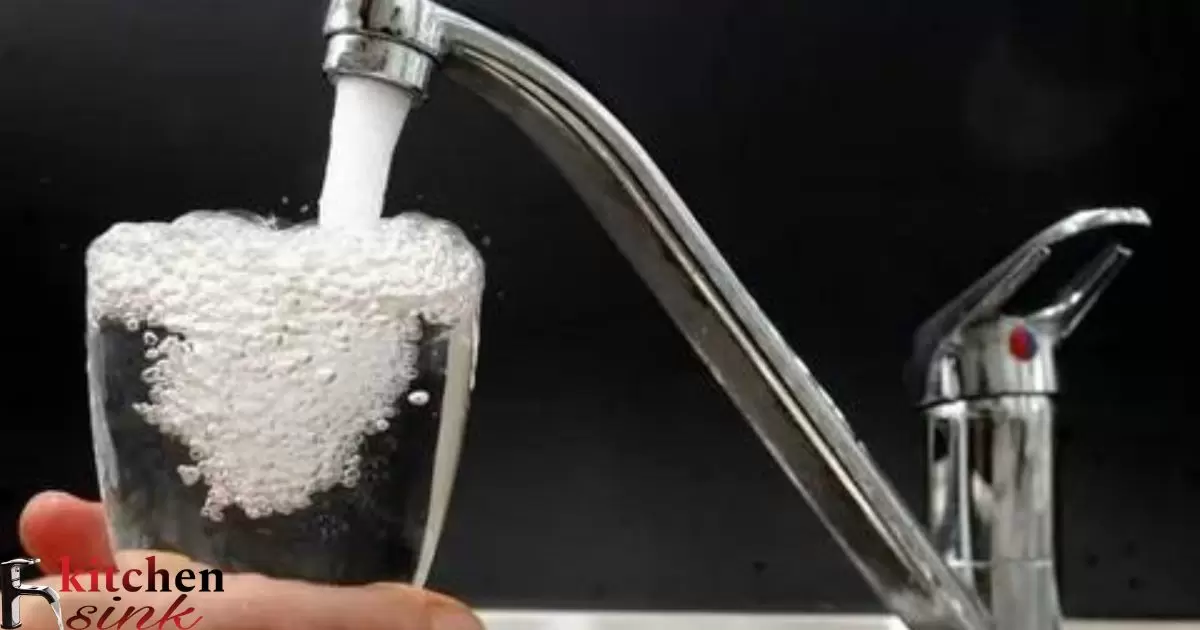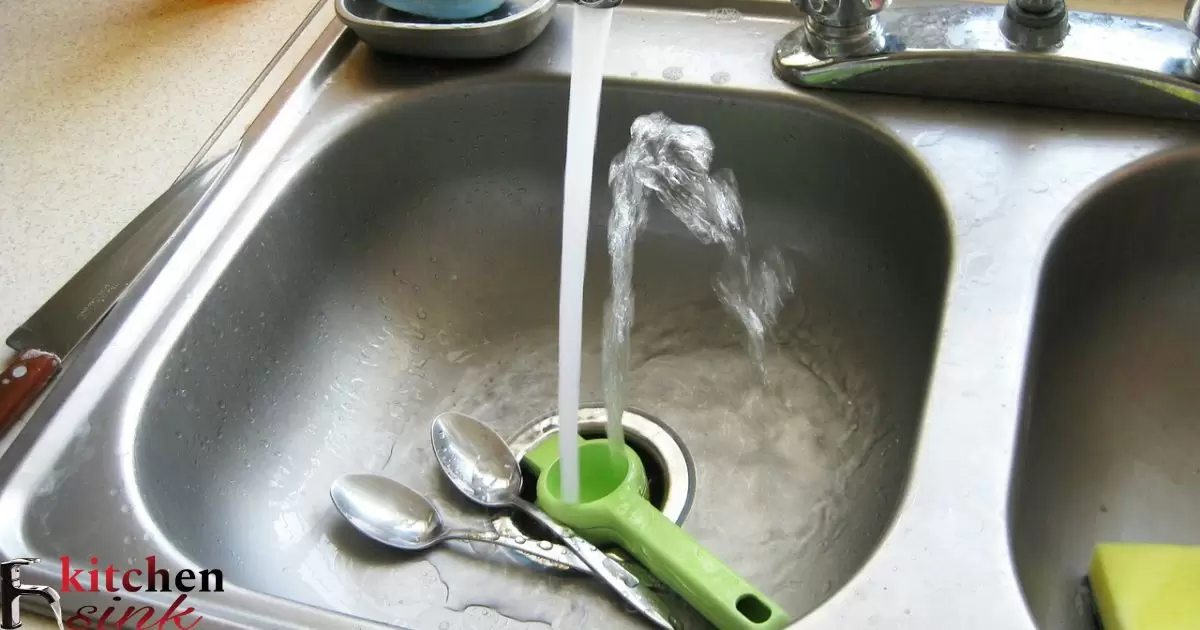Increasing water pressure in the kitchen sink means making the water flow out of the faucet faster and with more force. A low water pressure makes washing dishes, vegetables or filling pots very difficult and time taking in the kitchen sink.
Tired of low water pressure while doing dishes, cleaning or other kitchen tasks? Wondering how to get more power behind the stream from your kitchen faucet so the water pushes harder? The good news it that increasing water pressure is actually quite simple to do with basic techniques.
There are few basic methods to boost water pressure for kitchen sink like cleaning or replacing aerators, installing water pressure gauge to check pressure, checking connection pipes for any kinks or leaks, and upgrading plumbing fixtures which can provide higher flow. With small changes water will start gushing out of faucet with renewed force making washing and cleaning effortless.
Benefits Of Higher Water Pressure In The Kitchen Sink
Having good water pressure in the kitchen sink makes many tasks easier. When water comes out of the faucet with force, it can help get dishes cleaner and food off of surfaces more thoroughly. Dishes will not have to be scrubbed as hard to remove stuck on residue.
High water pressure is also helpful when needing to fill pots and pans for cooking. The faster flow means less time spent waiting for them to fill up to the level required for recipes. It becomes more convenient to do tasks that require moving or transporting water from the sink.
Getting Dishes Cleaner, Faster
Strong water pressure helps rinse away food scraps and stuck on messes with less effort. Pushing water against dishes with power makes it easier to dislodge baked on foods and grease. This leads to cleaner dishes with less time spent scrubbing each one.
The increased flow also helps dishes dry faster once rinsed. Standing water is pushed away so dishes air dry more quickly without spots. This saves time both in washing and drying cycles when finishing kitchen cleanup.
Easy Vegetable Prep
Prepping vegetables like washing leafy greens or rinsing berries goes quicker with higher pressure. Loose dirt and insects are pushed away from produce under the faucet stream. Less picking through is needed to find hiding debris.
Cutting boards and work surfaces can be blasted clean too. A forceful spray sweeps away food messes easily so counters stay sanitary during food handling tasks.
Quick Cooking And Food Prep
Tasks like boiling water for pasta or blanching vegetables are faster to complete. My Kitchen Sink Dripping Water reaches temperature more quickly since it enters pots at a swiffer rate.
Foods like meat can be rinsed more thoroughly before cooking. Powerful water helps flush away bacteria or excess seasoning with only a brief rinse. Food prep is completed in a timelier way overall.
Less Mess And Splatter
When water flows at a good rate, less splashing occurs. Dishes and surrounding areas stay drier during washing. Low pressure causes water to spray out of the faucet in an uncontrolled way.
Splatter is reduced with a focused stream from high pressure water delivery. Cleaning is neater and messes are contained. This prevents slippery floors or countertops from excess splashing and overflow.
Simple Ways To Boost Water Pressure For Your Kitchen Sink
A few simple techniques can improve water pressure to the kitchen sink without needing a plumber. Small changes help water flow with more force making daily tasks much easier.
How Can I Clean Or Replace The Kitchen Sink Aerator?
Clogged aerators are a common cause of low pressure. Screens collect mineral deposits reducing flow. Regular cleaning restores pressure over time. Removing involves untwisting from the faucet end. Replacing is done by hand-tightening a new aerator.
Signs It’s Time To Clean The Aerator
Signals include noticing reduced pressure, water spatters instead of a smooth flow or screens appear filled with gunk. Aerators last 3-6 months typically before needing attention. Cleaning every few months prevents pressure loss.
Removing And Cleaning Process
Unscrew the aerator using pliers or a wrench. Soak in white vinegar to dissolve buildup. Scrub with a old toothbrush as needed. Rinse and replace ensuring it’s secure but not overtightened which damages seals.
Replacing The Aerator
New aerators are inexpensive, usually under $5. Match the size and threads to the existing faucet before purchase. Hand tighten the replacement aerator clockwise until snug being careful not to strip the seals. Test water flow immediately.
Water Pressure Low? How To Check Water Pressure For Kitchen Sink
If water seems to barely trickle out or takes effort to run dishes, pressure may be low. Checking pressure helps decide if simple fixes can boost it. Water pressure can be examined easily without tools.
Place your hand flat over the faucet stream – strong pressure pushes hard while low pressure just patters against your hand. Numerous techniques verify the potential need for improvements.
What Is Considered Low Water Pressure?
Most homes have adequate pressure around 35-65 PSI (pounds per square inch). Below 30 PSI is generally regarded as low. However, the feel is more important than numbers. Pressure just strong enough to rinse dishes may suffice despite a low reading.
Using A Water Pressure Gauge
Water pressure gauges temporarily screw onto outside faucets. With water running, it reads PSI levels. Inexpensive models available online provide an exact pressure measure. Gauge checks identify if pressure falls below recommendations.
Other Ways To Evaluate Pressure
Run your hand under the flow – weak pressure may not feel very powerful. Look for thin, splintered streams rather than a full blast. Notice how water cascades over dishes – weak flows have trouble rinsing fully. These visuals help assess pressure.
Improving Water Supply To The Kitchen Sink
Ensuring the supply lines deliver water properly prevents low pressure. Common issues blocking flow can be fixed without the cost of a repipe. Check accessible parts that may cause pressure loss.
Are There Any Kinks Or Leaks In The Supply Lines?
Inspect supply tubing from its start to the faucet. Look for kinks that block flow or leaks losing water pressure before it exits the faucet. Simple alterations open flow resistance points.
Inspecting The Supply Lines
Check lines entering and exiting the wall and under the sink. Kinks appear as tight curves sharply crimping pipes which slow flow. Look for telltale moisture signs of small leaks along connections.
Fixing Common Supply Line Issues
Relieve kinks by gently bending pipe back into a smooth curve. Leaks get repaired using tube slip connectors or basic soldering. Replacing damaged sections improves pressure immediately.
Upgrading Plumbing Fixtures For The Kitchen Sink
Aging fixtures cause pressure loss over time. Selecting high-quality, high-flow replacements optimized for modern water usage improves performance. Consider upgrades if other solutions did not boost pressure enough.
How Can Upgrading Faucets Or Supplies Help Water Pressure?
New faucets designed to use less water but maintain flow push water out at higher pressure. Larger supply lines feeding the faucet also increase volume and pressure delivered to fixtures. Upgrades overcome pressure robbing problems in current setups.
Choosing A New High-Flow Faucet
kitchen faucets advertise 1.5 or 2.2 GPM to maintain flow while using less water. Multi-function spray settings focus water for cleaning power. Solid construction lasts longer before mineral buildup reduces pressure over time like old fixtures. Quality brands provide performance.
Considering Water Supply Piping Upgrades
Replacing thin copper pipes with larger 3/8 inch or 1/2 inch lines improves volume. CPVC or PEX resist mineral deposits better than copper which clogs over decades. Strategically increasing supply line sizing can boost whole home pressure equilibrium.
Will A Booster Pump Help The Kitchen Sink Pressure?
A last option, pumps boost pressure when other options fail. Small inline pumps install after the meter increasing PSI. Benefits depend on source pressure. Pumps last 7-10 years but add maintenance compared to simpler fixes. Only use if truly needed versus preferred enhancements.
Frequently Asked Question
Is Low Pressure Harming Plumbing?
Low pressure itself doesn’t harm plumbing normally but constant pressure loss over time can corrode pipes more quickly.
When Should A Plumber Check Things Out?
If multiple solutions don’t restore satisfactory pressure or you notice older pipes, it’s worth a plumber inspecting the main water lines and meters.
How Long Do Simple Fixes Take?
Most solutions like cleaning aerators or checking supply lines require only 15-30 minutes. Replacements may take an hour depending on your comfort level.
How Can I Tell What’s Causing Low Pressure?
Start by checking each simple and accessible factor in order – aerators, supply lines for kinks/leaks, and gauge pressure. Addressing one issue at a time helps pinpoint the root cause.
When Is A Pressure Booster Pump Needed?
A pump is a last option if all other solutions fail to raise pressure adequately. Proper installation ensures they boost flow effectively without wasting energy.
Conclusion
There are numerous simple ways homeowners can boost water pressure in the kitchen sink. With regular maintenance and checking for common issues, good pressure can be maintained with minimal effort. Small tweaks make a big difference in improving water flow for daily tasks.
With a few of the techniques covered here like cleaning aerators and checking supply lines, you’ll soon notice a difference at your kitchen sink. How to increase water pressure should not require a major overhaul in many cases. Proper pressure saves time and effort when cooking, cleaning and using water in the kitchen every day.



